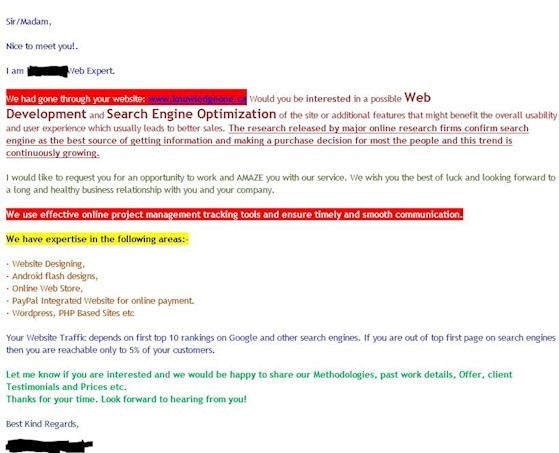Raise your hand if you’ve never ever received an unsolicited email. A spam email. An unwanted creation that populates your inbox with titles aimed to grab your attention.
Yup, I knew it! No hands were raised. The fact is we all are bombarded by spam, and it gets so well disguised that even the most sophisticated spam killers can’t see behind the smoke and mirrors.
Some of the spam received falls frequently under the scam category (or call it fraudulent business scheme), but I’m going to focus on the other type here; the unsolicited emails sent with seemingly good intentions but with little to no effect (excluding the annoyance felt when you pressed that delete button for the 467th time).
Why do people spam?
Money. Show me the money! People or companies spam either because they feel the pressure to sell or because they think they know better what you need. Plus, everybody wants to be noticed and wants to make sure that whatever product or service they provide is getting your attention.
So, the relatively simple mechanism of sending tons of emails towards unknown targets starts. The thought behind it seems to have valid points. If you send 1 million emails and get a 1% response, that still gives you 10,000 potential clients. Hurray! Problem is, it doesn’t work like that. Not anymore. Spam emails tend to feed more and more the Deleted Items/Junk Emails folder.
Consider this: Even the newsletter emails, the ones for which the people subscribed to, have only around 20% opening rate (and, depending on the industry, it could be even lower – education industry oscillates between 15 and 25%). So why do we still think that sending hundreds of emails to unknown targets could bring us good results? Mostly because we need money and we get desperate. And who knows, maybe kittycat2078@thisisnotarealwebsite.com could be the client that will end up being your next cash cow.
Do we still need to spam?
Well… I guess any communication medium is a good medium as long as your clients are using it and as long as you do it in a proper way. Although, as a marketing strategy the best one would be a pull strategy, one in which your clients contact you first, a strategy focused on building your brand image at a level that will convince and assure your target audience.
But let’s assume that you still need to send emails to clients you are certain could use your services. Then do it in a proper way. And by “proper way” I mean:
- Limit your emails to companies you actually researched prior. Do your homework! Who are your clients? What do they need? How can you help them out? Is it the right person you’re contacting, and the right time to send them emails too? Get personal, and be specific to their needs!
- Be concise. Nobody has time to read. You don’t want to give your target audience the story of your life. You want to get their attention first, and if you can convince them to reply back, that’s an (email) battle won.
- Avoid emails that are not personalized with your company details, or that look too desperate like this one (shown exactly as I received it):

- Avoid mega sensational discourse. Amazing! Huge discount! It smells foul even before people go through your text.
- Try contacting your clients through other media first (LinkedIn could be a start). It’s always easier to sell when you don’t push your sales pitch right after the first hello.
All in all, communication, in general, is a jungle not easily tamed, and if you manage to send unsolicited emails that yield results, then kudos to you! As for me, I’m getting back to my inbox. I just received an email from someone that thinks I’m cute, and they only want my credit card details to send me a fortune from some Nigerian prince or Warren Buffet.







Leave A Comment